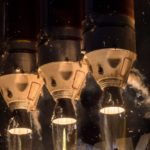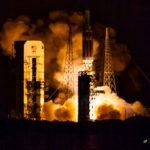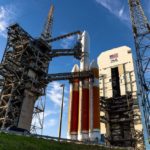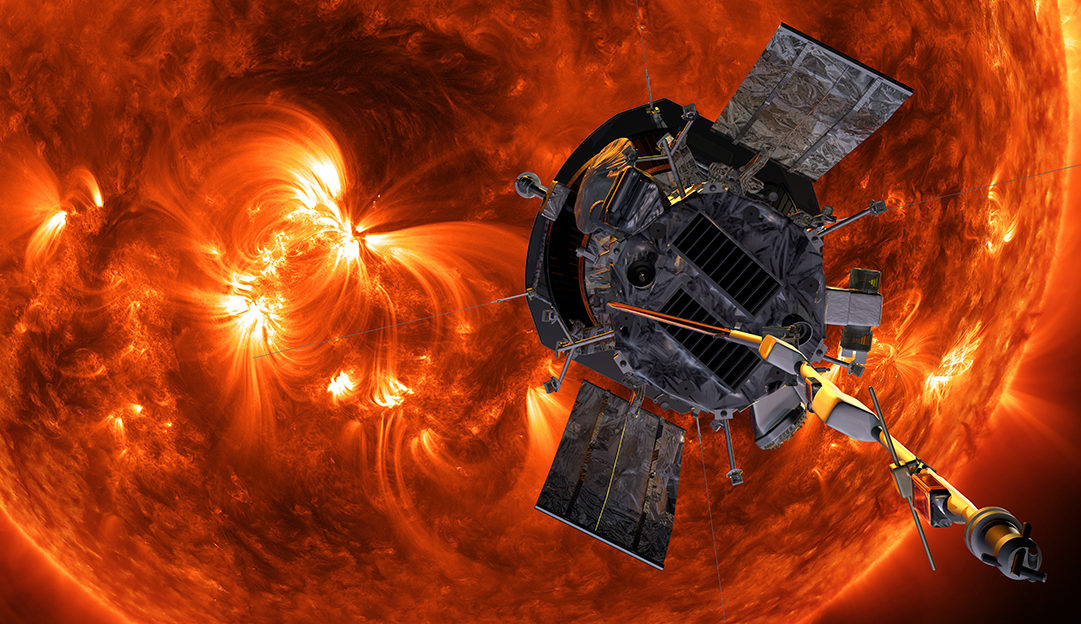
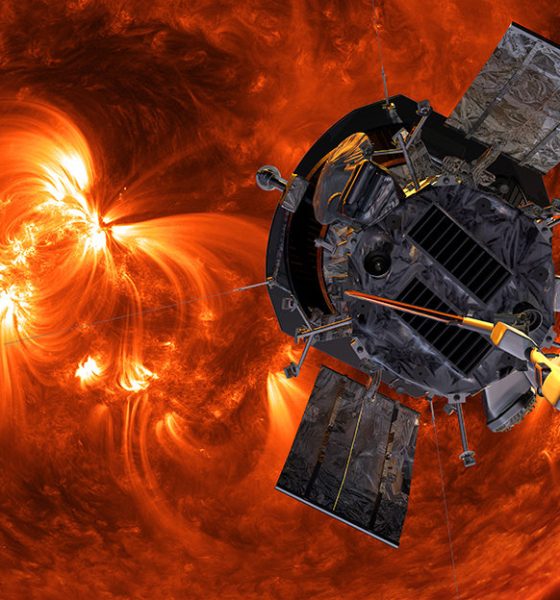
News
NASA’s Parker Solar Probe takes first picture inside the Sun’s atmosphere
Traveling at the record-breaking speed of 213,200 miles per hour, NASA’s Parker Solar Probe came within 15 million miles of the Sun’s surface, completing its first solar encounter phase and rewarding scientists with the first picture ever taken from within our star’s atmosphere.
Launched on August 12, 2018 in a United Launch Alliance Delta IV Heavy rocket from Cape Canaveral, Florida, the probe will help provide answers to some of the mysteries of our Sun. In particular: Why is the atmosphere hotter than the surface? Why is the solar wind continuously accelerated? These are important questions considering the Sun is both essential for life and a potential danger through its magnetized materials’ interference with our satellites, electronics, and astronauts in orbit. Scientists on the craft’s team presented the initial set of new data from its encounter on December 12th during the 2018 American Geophysical Union meeting.
The Parker Probe’s team began downloading data from its journey on December 7th this year, but the actual Sun passage took place about a month earlier, from October 31st through November 11th. The delay was caused by the nature of the Sun itself – as a wide band radio source, communications are not possible anytime a craft is in front, behind, or to the side of it.
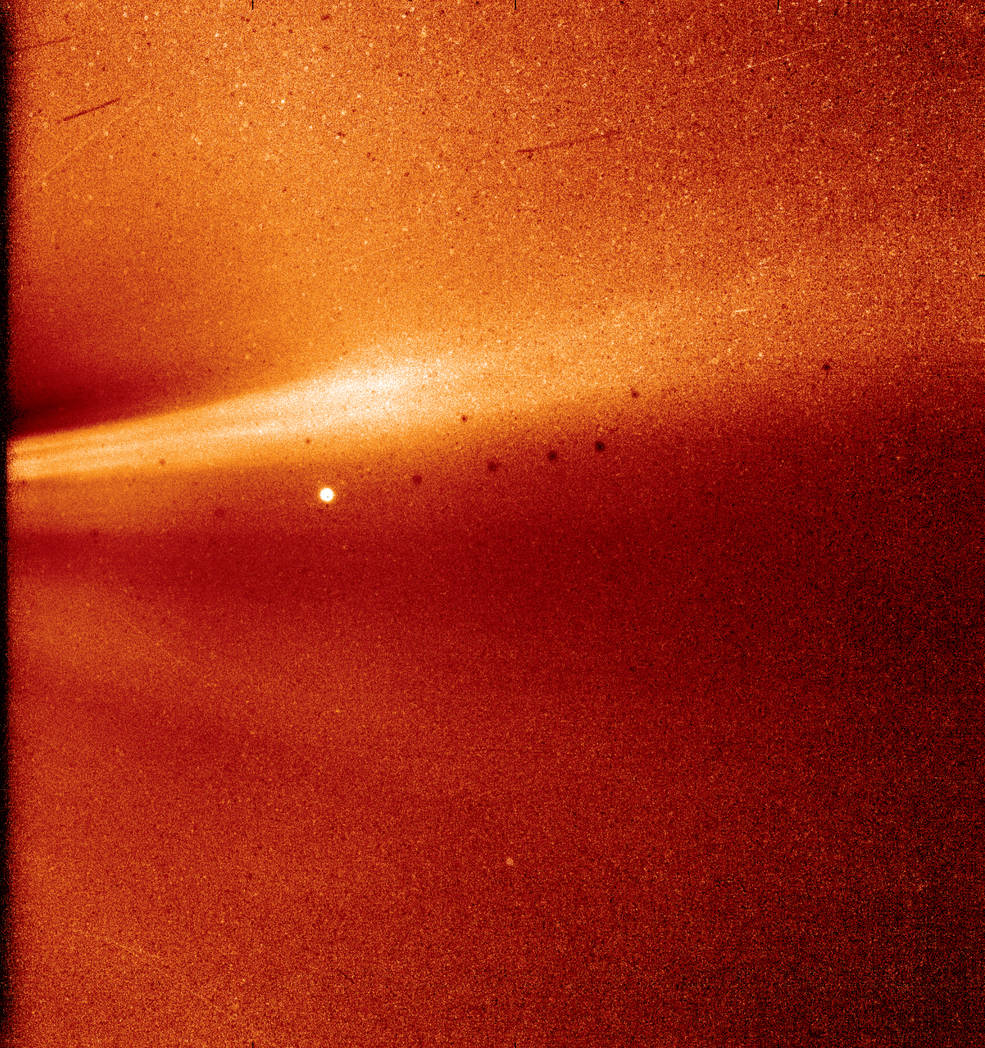
During the probe’s approaches, scientists rely on one of four beacons installed that signal the craft’s status. Mission controllers at the John Hopkins University Applied Physics Labs (JHUAPL) received the “A” beacon at 4:46 pm EST on November 7, 2018, indicating that the probe was operating well and collecting data. Also, more data from the probe’s initial encounter will be forthcoming next year following its next approach.
This latest visitor to the Sun was named after physicist Eugene Newman Parker, best known for his mid-1950s theories about solar wind and the Sun’s atmosphere being hotter than the surface itself, and the craft will likely be one more data point complimenting his predictions. Since the Parker Probe’s mission will encounter our star in ways never done before, its science team is not quite sure of what to expect.
“Parker is an exploration mission — the potential for new discoveries is huge,” Nour Raouafi, a Parker Solar Probe project scientist at the JHUAPL in Laurel, Maryland, was quoted on the issue. The craft will also pass by Venus a total of seven times and will come within 3.8 million miles of the Sun at its closest of 24 planned approaches.
- The Parker Solar Probe prior and during launch on August 12, 2018 in a United Launch Alliance Delta IV Heavy rocket from Cape Canaveral, Florida. | Credit: Tom Cross/Teslarati
- The Parker Solar Probe prior and during launch on August 12, 2018 in a United Launch Alliance Delta IV Heavy rocket from Cape Canaveral, Florida. | Credit: Tom Cross/Teslarati
- The Parker Solar Probe prior and during launch on August 12, 2018 in a United Launch Alliance Delta IV Heavy rocket from Cape Canaveral, Florida. | Credit: Tom Cross/Teslarati
- The Parker Solar Probe prior and during launch on August 12, 2018 in a United Launch Alliance Delta IV Heavy rocket from Cape Canaveral, Florida. | Credit: Tom Cross/Teslarati
The Parker Solar Probe prior and during launch on August 12, 2018 in a United Launch Alliance Delta IV Heavy rocket from Cape Canaveral, Florida. | Credit: Tom Cross/Teslarati
Figuring out what the actual underlying physics of the Sun are is a challenge for scientists studying its activity. When observing the surface changes, the variations seen are difficult to classify as being caused by either the star’s activity or its rotation due to how fast it moves. The speed of the Parker Probe will allow it to nearly match the Sun’s rotational speed, one revolution per 27 days as viewed from Earth, meaning it will hover over one area for a short amount of time.
While there, it will be able to specifically collect data about activity caused by the Sun itself, thereby enabling scientists to revise their models accordingly. To collect data surrounding these questions, the probe was given a thermal heat shield that can withstand the 2,500 degrees Fahrenheit temperatures it will be exposed to while maintaining a mid-80s F temperature for its instruments.
In addition to the Parker Probe’s historic photo and data, NASA has been on a roll with milestones and discoveries this year. Launched in 1977, the Voyager 2 spacecraft became the second human-made object to enter interstellar space as it left our solar system on November 5th. The first was Voyager 1 when it left on August 25, 2012. NASA also landed its InSight craft on the surface of Mars on November 26, 2018, and several photos have been returned from it since, including a lander “selfie“. That mission had a second milestone with it via two CubeSats named Mars Cube One (MarCO), successfully demonstrating the use of tiny satellites in deep space. The satellites were able to relay InSight’s landing event data to its team much quicker than would be been possible with other orbiting satellites, and they even sent back a picture of the red planet as they passed by and continued into their long orbit around the Sun.
Watch the below video for more on the Parker Solar Probe’s mission:

Elon Musk
Elon Musk’s X will start using a Tesla-like software update strategy
The initiative seems designed to accelerate updates to the social media platform, while maintaining maximum transparency.

Elon Musk’s social media platform X will adopt a Tesla-esque approach to software updates for its algorithm.
The initiative seems designed to accelerate updates to the social media platform, while maintaining maximum transparency.
X’s updates to its updates
As per Musk in a post on X, the social media company will be making a new algorithm to determine what organic and advertising posts are recommended to users. These updates would then be repeated every four weeks.
“We will make the new 𝕏 algorithm, including all code used to determine what organic and advertising posts are recommended to users, open source in 7 days. This will be repeated every 4 weeks, with comprehensive developer notes, to help you understand what changed,” Musk wrote in his post.
The initiative somewhat mirrors Tesla’s over-the-air update model, where vehicle software is regularly refined and pushed to users with detailed release notes. This should allow users to better understand the details of X’s every update and foster a healthy feedback loop for the social media platform.
xAI and X
X, formerly Twitter, has been acquired by Elon Musk’s artificial intelligence startup, xAI last year. Since then, xAI has seen a rapid rise in valuation. Following the company’s the company’s upsized $20 billion Series E funding round, estimates now suggest that xAI is worth tens about $230 to $235 billion. That’s several times larger than Tesla when Elon Musk received his controversial 2018 CEO Performance Award.
As per xAI, the Series E funding round attracted a diverse group of investors, including Valor Equity Partners, Stepstone Group, Fidelity Management & Research Company, Qatar Investment Authority, MGX, and Baron Capital Group, among others. Strategic partners NVIDIA and Cisco Investments also continued support for building the world’s largest GPU clusters.
News
Tesla FSD Supervised wins MotorTrend’s Best Driver Assistance Award
The decision marks a notable reversal for the publication from prior years, with judges citing major real-world improvements that pushed Tesla’s latest FSD software ahead of every competing ADAS system.

Tesla’s Full Self-Driving (Supervised) system has been named the best driver-assistance technology on the market, earning top honors at the 2026 MotorTrend Best Tech Awards.
The decision marks a notable reversal for the publication from prior years, with judges citing major real-world improvements that pushed Tesla’s latest FSD software ahead of every competing ADAS system. And it wasn’t even close.
MotorTrend reverses course
MotorTrend awarded Tesla FSD (Supervised) its 2026 Best Tech Driver Assistance title after extensive testing of the latest v14 software. The publication acknowledged that it had previously criticized earlier versions of FSD for erratic behavior and near-miss incidents, ultimately favoring rivals such as GM’s Super Cruise in earlier evaluations.
According to MotorTrend, the newest iteration of FSD resolved many of those shortcomings. Testers said v14 showed far smoother behavior in complex urban scenarios, including unprotected left turns, traffic circles, emergency vehicles, and dense city streets. While the system still requires constant driver supervision, judges concluded that no other advanced driver-assistance system currently matches its breadth of capability.
Unlike rival systems that rely on combinations of cameras, radar, lidar, and mapped highways, Tesla’s FSD operates using a camera-only approach and is capable of driving on city streets, rural roads, and freeways. MotorTrend stated that pure utility, the ability to handle nearly all road types, ultimately separated FSD from competitors like Ford BlueCruise, GM Super Cruise, and BMW’s Highway Assistant.
High cost and high capability
MotorTrend also addressed FSD’s pricing, which remains significantly higher than rival systems. Tesla currently charges $8,000 for a one-time purchase or $99 per month for a subscription, compared with far lower upfront and subscription costs from other automakers. The publication noted that the premium is justified given FSD’s unmatched scope and continuous software evolution.
Safety remained a central focus of the evaluation. While testers reported collision-free operation over thousands of miles, they noted ongoing concerns around FSD’s configurable driving modes, including options that allow aggressive driving and speeds beyond posted limits. MotorTrend emphasized that, like all Level 2 systems, FSD still depends on a fully attentive human driver at all times.
Despite those caveats, the publication concluded that Tesla’s rapid software progress fundamentally reshaped the competitive landscape. For drivers seeking the most capable hands-on driver-assistance system available today, MotorTrend concluded Tesla FSD (Supervised) now stands alone at the top.
News
Elon Musk’s Grokipedia surges to 5.6M articles, almost 79% of English Wikipedia
The explosive growth marks a major milestone for the AI-powered online encyclopedia, which was launched by Elon Musk’s xAI just months ago.

Elon Musk’s Grokipedia has grown to an impressive 5,615,201 articles as of today, closing in on 79% of the English Wikipedia’s current total of 7,119,376 articles.
The explosive growth marks a major milestone for the AI-powered online encyclopedia, which was launched by Elon Musk’s xAI just months ago. Needless to say, it would only be a matter of time before Grokipedia exceeds English Wikipedia in sheer volume.
Grokipedia’s rapid growth
xAI’s vision for Grokipedia emphasizes neutrality, while Grok’s reasoning capabilities allow for fast drafting and fact-checking. When Elon Musk announced the initiative in late September 2025, he noted that Grokipedia would be an improvement to Wikipedia because it would be designed to avoid bias.
At the time, Musk noted that Grokipedia “is a necessary step towards the xAI goal of understanding the Universe.”
Grokipedia was launched in late October, and while xAI was careful to list it only as Version 0.1 at the time, the online encyclopedia immediately earned praise. Wikipedia co-founder Larry Sanger highlighted the project’s innovative approach, noting how it leverages AI to fill knowledge gaps and enable rapid updates. Netizens also observed how Grokipedia tends to present articles in a more objective manner compared to Wikipedia, which is edited by humans.
Elon Musk’s ambitious plans
With 5,615,201 total articles, Grokipedia has now grown to almost 79% of English Wikipedia’s article base. This is incredibly quick, though Grokipedia remains text-only for now. xAI, for its part, has now updated the online encyclopedia’s iteration to v0.2.
Elon Musk has shared bold ideas for Grokipedia, including sending a record of the entire knowledge base to space as part of xAI’s mission to preserve and expand human understanding. At some point, Musk stated that Grokipedia will be renamed to Encyclopedia Galactica, and it will be sent to the cosmos.
“When Grokipedia is good enough (long way to go), we will change the name to Encyclopedia Galactica. It will be an open source distillation of all knowledge, including audio, images and video. Join xAI to help build the sci-fi version of the Library of Alexandria!” Musk wrote, adding in a later post that “Copies will be etched in stone and sent to the Moon, Mars and beyond. This time, it will not be lost.”
